|
Montreal DistrictsSaint-Laurent District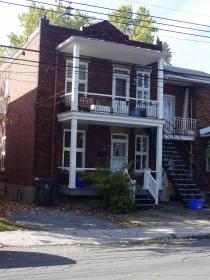
The Saint-Laurent district and borough is among the villages whose origins go way back to the Nouvelle-France. The territory became a municipality in 1893 and has experienced a continuous growth ever since. At the beginning of the 20th century, the area was still a small community gathered around an institutional centre. Today it's a dynamic multi-ethnic borough and the largest in Montreal. Unlike other Montreal districts and boroughs, the Saint-Laurent district grew in the middle of the island instead of near the water. The Rivière-des-Prairies also called the Back River and its channel the St-Lawrence River are somewhat far far away.
Modern Home Architecture 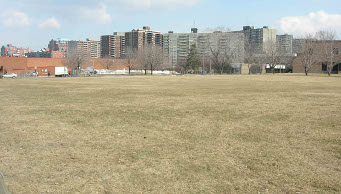
As early as the end of the 19th century, the Saint-Laurent district started its urbanization. The 20th century is characterized by the remarkable growth of the suburbs that originates from the economic post-war euphoria and from the high purchasing power of a great number of households. Urban growth results from a growing attraction of industrial activities and modern technologies, and from an increase of the residential sectors. Urbanization usually starts with the construction of in-row homes that are less expensive. With the suburbs, bungalows and cottages became very popular. They were the true symbol of a new life style. During the 1950’s and the 1960’s, the North and the West of the Centre of the district and borough developed somehow like a suburb. It resulted in broad peaceful lands, curved avenues planted with trees and spacious one-family houses equipped with a garage. The increasingly stronger demographic pressure brought another form of modern habitat. In the middle of the 1970’s, large apartment buildings were built along the highways that border the territory. This type of habitat is an architectural response to a new way of life. The concrete is king. The architectural language is rather basic and the design is simple. The series of units create a repetitive design. Interior garages are linked to apartment buildings, to small communities and to commercial centres. The dwellings offer an interesting autonomy. Several domiciliary projects are presently under development in the neighborhood. Bois Franc is one of the most valued residential sectors because of the quality of life found on the territory and because of its close proximity with nature. 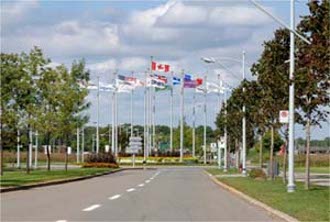
Starting in the 1940’s, the development of the industrial sector gave a phenomenal rise to the Saint-Laurent district. Because of the benefits brought by the highways and the airport, all the western part of the borough was eventually assigned to industrial activities. Industrials found many available sites at very accessible prices and the era marked the beginning of the industrialization of the western part of the city of Montreal. Today, the district is an important industrial area, with more than 400 companies established on its territory. The Technoparc of Saint-Laurent is, indeed, one of the largest industrial parks of the province of Quebec. The 25 million square foot Technoparc (2.5 million square metres) is located close to Montreal’s Pierre Elliott Trudeau Airport, to Downtown Montreal and to the city’s major arteries. The Saint-Laurent district is the largest territory north of the island of Montreal. Its industrial park is regarded as one of the most important aeronautic poles. More than 100,000 people work in the viciniy every day. The pharmaceutical sector is also well developed, as well as the communication sector. 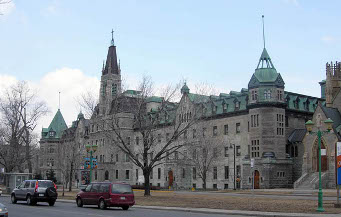
At the turning of the 20th century, the small village that it once was, benefited from the radiance of its college, now called the Cégep de Saint-Laurent. The popularity of the College has always been exceptional. The first owners, the Congregation des Pères de Sainte-Croix came to Canada in 1847. In 1952, the Fathers constructed the first building on the actual site of the College. Even if the construction of the College spread over more than a century, the architectural component is rather harmonious. The College became a Cégep in 1968. Among other cultural institutions you may visit the Vanier College, the Musée d’Art de Saint-Laurent, opened to the public since 1979 and the École primaire Henri Beaulieu, the most multiethnic school of Montreal. The traffic generated by the tramway eventually transformed Décarie into a main street. Because of the opening of many commercial centres in the neighborhood, Décarie progressively became an important commercial zone. During the 20th century boulevards like Côte Vertu were widened. The city adapted itself to the car traffic. Altough there are still some commercial activities along Sainte-Croix, the institutional vocation of the Boulevard now prevails. The district and borough is served by two Metro Stations, du Collège and Côte Vertu. In this district, curved streets alternate with rectilinear streets between which small parks have been inserted. The curved streets aim at reducing the speed of the cars in the residential sectors. Broad streets bordered by trees and the monumental perspective from de l’Église and du College reveal an aesthetic design that falls into the City Beautiful style, an urban movement that was popular during the beginning of the 20th century. 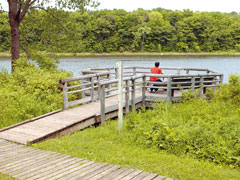
The district offers many green areas, more than 30 parks are scattered on its territory. This residential district and borough also offers as many as 30 exterior public swimming pools, tennis courts, canine parks, sites with barbecues, a golf course and much more. Unlike what happened to other Montreal districts and boroughs, the highways do not divide the Saint-Laurent district into various sectors, instead they mark its boundaries. 
At the du Collège Metro Station, the travellers arrive in front of the Parc Beaudet, corner of Décarie and du Collège, one of the three protected green parks in the vicinity. The other two being the Boisé du parc Marcel Laurin corner of Cavendish and Poirier and the Parc nature du Bois de Liesse on Douglas B. Floreani Street. The Saint-Laurent district is as multiethnic as is Côte-des-Neiges and Parc-Extension. Its socio-demographic structure keeps changing while it continues to be the preferred destination of many newcomers. The Henri Beaulieu Elementary School on Bleignier is a school where multi-ethnicity is at its highest level. The arabic language has become the first language spoken in the borough, a reality that can be observed in most primary and elementary schools. Chameran, an area located at the peak of the borough is now called "Petit Liban" or Little Lebanon by the population. All those changes are lived in a rather harmonious dynamic even though old and new residents are confronted with many challenges including adaptation to the existing structures and accessibility to the services offered by the community. Thank you for visiting the Saint-Laurent District. Chameran Exit Saint-Laurent District
|
Montreal Districts
What district am I in?
Ahuntsic
Anjou
Cartierville
Côte-des-Neiges
Hochelaga-Maisonneuve
Île Bizard
Lachine
LaSalle
Mercier
Montréal-Nord
Notre-Dame-de-Grâce
Outremont
Parc-Extension
Petite-Patrie
Pierrefonds
Plateau-Mont-Royal
Pointe-aux-Trembles
Rivière-des-Prairies
Rosemont
Roxboro
Sainte-Geneviève
Saint-Laurent
Saint-Léonard
Saint-Michel
Sud-Ouest
Verdun
Ville-Marie
Villeray
Atlas de l'emploi
Images Montréal
Images Montreal is a huge project that aims to be the biggest exclusive website of Montreal's skyscrapers, historical buildings and architecture landmarks.
Old historical monuments have a lot of interest as much as new apartment buildings, new skyscrapers or graffitis.
Montreal by Metro
Montreal by Metro is an unofficial website for fans of Montreal's metro system.
Our modern rapid transit system is one of the most architecturally distinctive subway systems in the world.
Unlike many other subway networks, every station in Montreal is distinct.
The system is beautifully decorated with hundreds of pieces of public art, including sculptures, frescoes, and stained glass.
STM Montréal
STM Montreal is composed of 68 metro stations spread along four lines and of a network made of 170 daytime and 20 night time bus service routes.
The metro provides 1.3 million trips every day. STM Montreal web site also offers a section called Art in the Métro.






